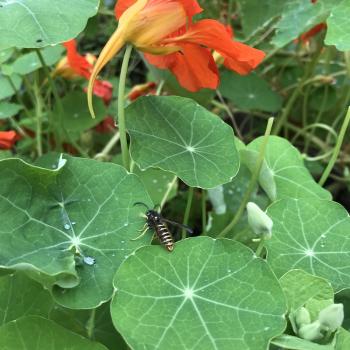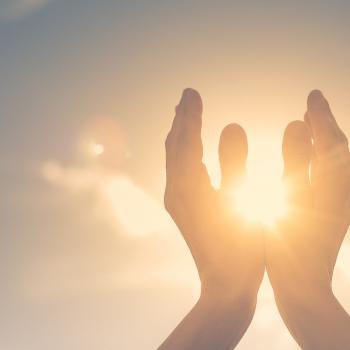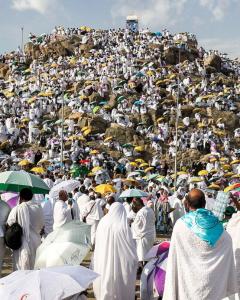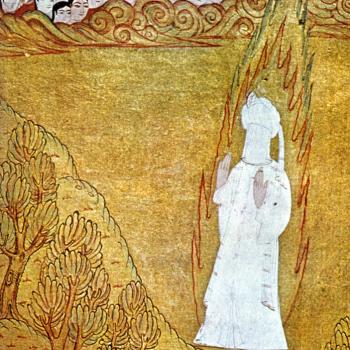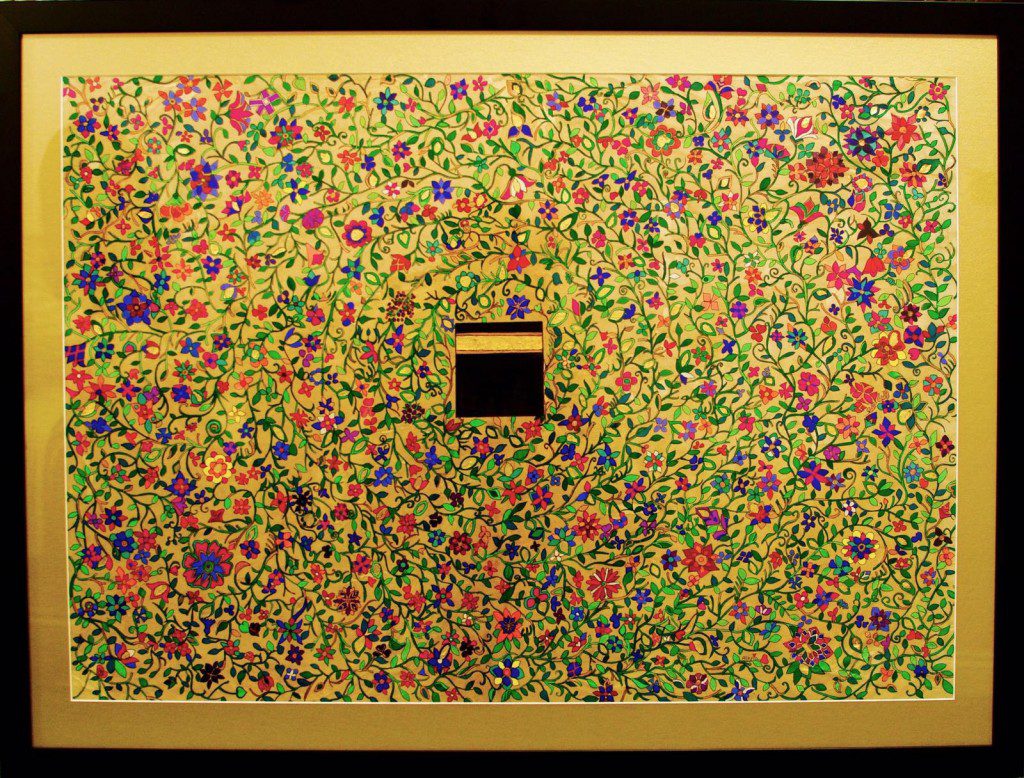
I was fully aware that within seconds my body would be drawn into a mass of humanity unlike any other in the world. “Surrender to the experience,” I thought, while stepping into the overflowing main courtyard surrounding the Kaaba. I still hadn’t overcome how surreal it was to be at the heart of Islam’s holiest site just 18 hours after stepping from my office situated in the centre of London’s financial district, where worldly pursuits of wealth and status become the objects competing for our attention.
The barriers that divide us in our daily lives are lifted here at the point where all directions of prayer converge. No honorary titles or entitlements have worth or function. There’s no distinguishing based on whether you are a woman or man, whether your income bracket is high or low. Rather, the bracketing qualities that contain us outside — our nationality, ethnicity, age, or skin tone — are shed at the door. Wherever our outward journeys have started, we all walk barefoot inward into a single circle, devoid of these unnecessary parenthesis appended to our identities.
“The goal of all is the same” no matter what road we took to get here or what quarrels we fought on the way, Rumi writes in Fihi Ma Fihi, It is What It is.
We are both universal and singular, each worshipper an equal soul before the Creator of all humankind and all being. Here we consciously move together in a unified mass, circling seven times around this stone cube as our prophets, peace and blessings be upon them, and our predecessors have for centuries. It’s become a timeless procession connecting us to the scattered cosmos. With the right kind of openness, the pilgrimage is a truly humbling, enchanting and purifying act of dedication to God, The Gracious One.
The ritual starts at the eastern corner, where the Black Stone is situated, a stone that Prophet Muhammad, peace and blessings be upon him, said was blackened by the sins of humankind after descending from heaven as white as milk. I’ve certainly swerved from the path since I was last graced by the opportunity to visit the Holy City five years ago. Yet somehow this journey of bonding with the Divine proves to be circular; the detours we may drift onto bring us right back to the point of connection with Him.
My soul yearns for nourishment as I walk around the four corners of the central cube draped in black. I yield my body to the crowd that surrounds me in every direction, letting it move my limbs. I’m here for my soul, after all, and as we give thanks and make prayers to the Infinitely Compassionate One, drawing our attention to the Kaaba as birds circle above us, I concede any claim to the personal space that I normally protect.
Sometimes I find my body being drawn inward with an uncontrollable force, and it is suddenly so close to the edge of the Kaaba I can almost touch it.
Almost, but not quite. The mass has a different idea and my body is abruptly yanked back, the edifice drifting further away from view. At times, I sense how densely packed it has become, I’m unable to move my arms and can barely take a step. A few droplets of sweat trickle down my cheek, which must be bright pink from the searing desert sun beaming down on us.
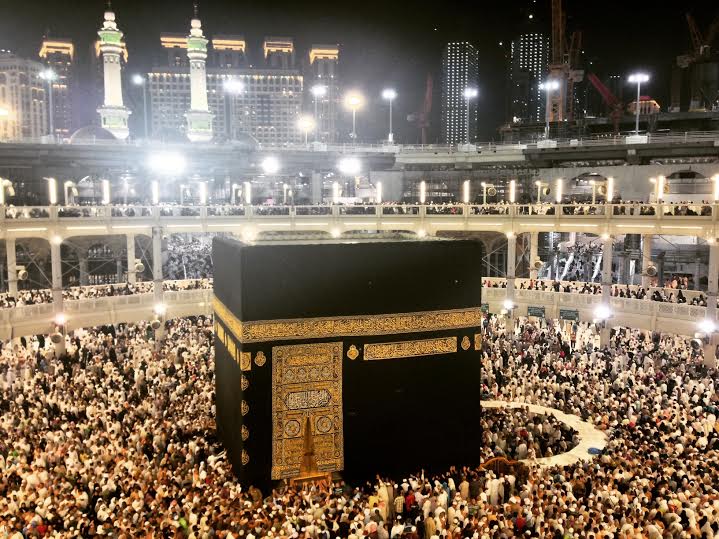
This incredible constriction often happens as we approach the eastern corner as many worshippers form indiscriminate lines to attempt to get near enough to the Black Stone to kiss or touch it. An inevitable traffic jam forms, making crossing the corner sometimes a physically excruciating exercise.
Yet we pay little heed to our physical state, undeterred by whether our bodies are free or inhibited. With our hands in the air, we say “Bismillah, Allahu Akbar,” “In the name of God, God is Great.” I can sense the grin on my face get brighter with each circumambulation.
And just as I feel my body couldn’t become any more squeezed by the mass, the path opens up once more and I sense I am floating, arms free as a breeze cools my cheeks. I continue to supplicate and make prayers for myself, my loved ones and those in need.
By the time I’ve finished the seven courses of the Tawaf, the first part of the Umrah pilgrimmage, my body has moved with ease and gotten swept into jams more times than I can count. It’s all the same to me. There’s a tranquility in this surrender that I wish I could bottle and sip from whenever I find myself knotted and constrained by daily events.
The short journey has become a parable for how I must try to live my life beyond the parameters of Mecca: to regard each event that causes constriction and every period of ease as a grace necessary to complete our blessed journeys. How grand would it be to maintain the vantage point offered at the heart of the Kaaba, to genuinely achieve this Self Surrender, or Islam, in the face of every act of destiny during our worldly existence? While I have returned home to London at the time of writing this, settled back into a routine that involves daily trips to the Square Mile, it is my hope to continue to see my experience at the Kaaba as a kind of compass. One that reminds me that the spiritual journey toward the heart of Islam is one that can only truly take place in my own.
Circle the Kaaba of the heart
If you possess a heart.
The heart is the true Kaaba,
The other is just a stone.
God enjoined the ritual
Of circling the formal Kaaba
As a way for you to find a heart.
But if your feet walk
Around the Kaaba a thousand times,
And yet you injure a heart,
Do you expect to be accepted?
[Divani Shamsi Tabrizi: 3,104, Love’s Ripening, tr. by Kabir Helminski and Ahmad Rezwani, courtesy Rumi’s Circle]



